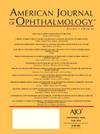Advancing Myopia Management: The Therapeutic Potential of Microbiota-Targeted Interventions.
IF 4.1
1区 医学
Q1 OPHTHALMOLOGY
引用次数: 0
Abstract
OBJECTIVE Myopia is a growing global health concern, particularly in East Asia. Recent studies suggest that ocular surface microbiota may play a key role in regulating local immune homeostasis in the eye. This study aims to investigate the relationship between ocular surface microbiota and high myopia (HM), with the goal of identifying potential microbiota targets for controlling myopia progression. METHODS 16S rRNA sequencing was used to analyze ocular surface microbiota in HM and NC groups. Microbial diversity and composition were compared, focusing on the abundance of Lactobacillus vini (L. vini). The correlation analysis explores potential factors influencing the distribution of differentially abundant bacterial species. In vivo and in vitro experiments assessed its role in Collagen-1 synthesis, scleral remodeling, and ocular inflammation. RESULTS Significant differences in microbial diversity were found between the HM and NC groups. L. vini was enriched in the NC group and suggested potential in inhibiting myopia progression. Dysbiosis of L. vini in myopic individuals may also be mediated by parental myopia background. In vivo and in vitro experiments further confirmed that L. vini downregulated ocular surface inflammatory markers IL-6 and TNF-α in form deprivation myopic mice, inhibited scleral remodeling, and reduced myopic phenotypic changes. CONCLUSION L. vini may help mitigate myopia progression, potentially through regulating ocular surface inflammation. Future studies using genomic techniques are needed to further understand the mechanisms and therapeutic potential of microbiota-targeted interventions in myopia management.推进近视管理:微生物群靶向干预的治疗潜力。
目的近视是一个日益严重的全球卫生问题,特别是在东亚。最近的研究表明,眼表微生物群可能在调节眼睛局部免疫稳态中起关键作用。本研究旨在探讨眼表微生物群与高度近视(HM)之间的关系,以确定控制近视进展的潜在微生物群靶点。方法采用16s rRNA测序法对对照组和对照组眼表微生物群进行分析。比较了微生物的多样性和组成,重点研究了乳酸菌(Lactobacillus vini)的丰度。相关性分析探讨了影响差异丰度细菌分布的潜在因素。体内和体外实验评估了其在胶原-1合成、巩膜重塑和眼部炎症中的作用。结果HM组与NC组微生物多样性差异显著。在NC组中,L. vini含量丰富,可能具有抑制近视进展的潜力。近视个体中葡萄状乳杆菌的生态失调也可能与父母近视背景有关。体内和体外实验进一步证实了葡萄球菌下调形式剥夺性近视小鼠眼表炎症标志物IL-6和TNF-α,抑制巩膜重塑,减轻近视表型改变。Vini可能通过调节眼表炎症帮助缓解近视进展。未来的研究需要使用基因组技术来进一步了解微生物群靶向干预近视治疗的机制和治疗潜力。
本文章由计算机程序翻译,如有差异,请以英文原文为准。
求助全文
约1分钟内获得全文
求助全文
来源期刊
CiteScore
9.20
自引率
7.10%
发文量
406
审稿时长
36 days
期刊介绍:
The American Journal of Ophthalmology is a peer-reviewed, scientific publication that welcomes the submission of original, previously unpublished manuscripts directed to ophthalmologists and visual science specialists describing clinical investigations, clinical observations, and clinically relevant laboratory investigations. Published monthly since 1884, the full text of the American Journal of Ophthalmology and supplementary material are also presented online at www.AJO.com and on ScienceDirect.
The American Journal of Ophthalmology publishes Full-Length Articles, Perspectives, Editorials, Correspondences, Books Reports and Announcements. Brief Reports and Case Reports are no longer published. We recommend submitting Brief Reports and Case Reports to our companion publication, the American Journal of Ophthalmology Case Reports.
Manuscripts are accepted with the understanding that they have not been and will not be published elsewhere substantially in any format, and that there are no ethical problems with the content or data collection. Authors may be requested to produce the data upon which the manuscript is based and to answer expeditiously any questions about the manuscript or its authors.

 求助内容:
求助内容: 应助结果提醒方式:
应助结果提醒方式:


